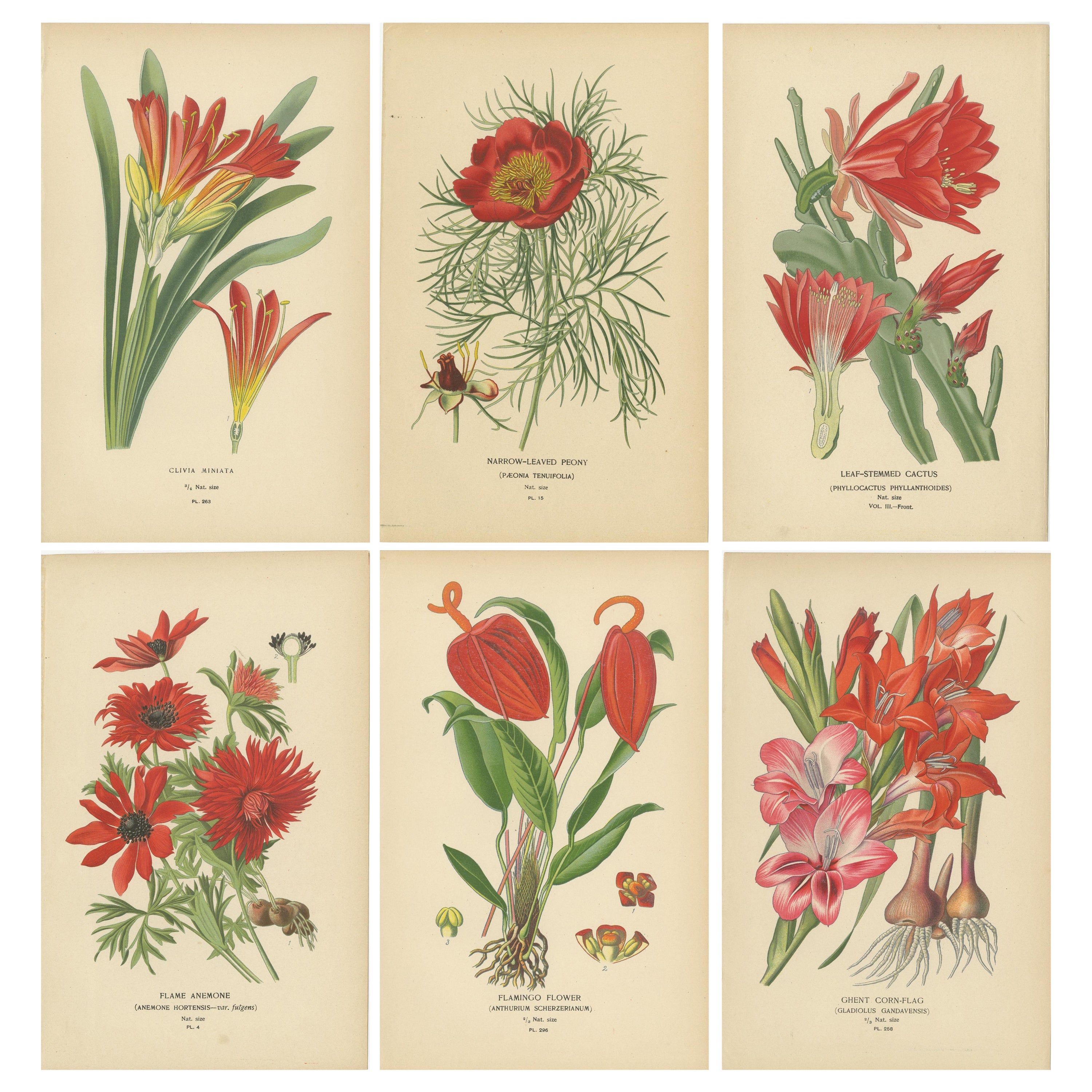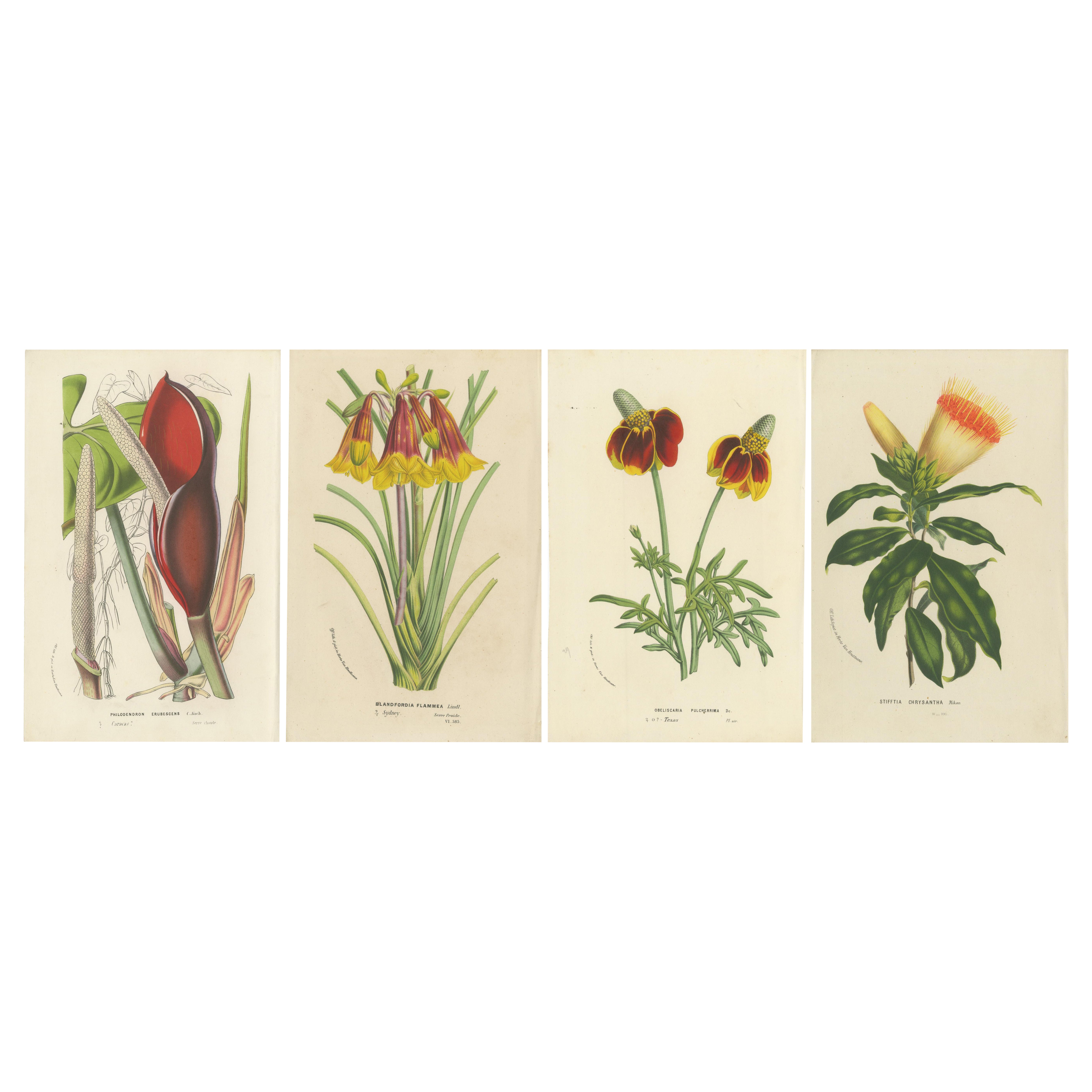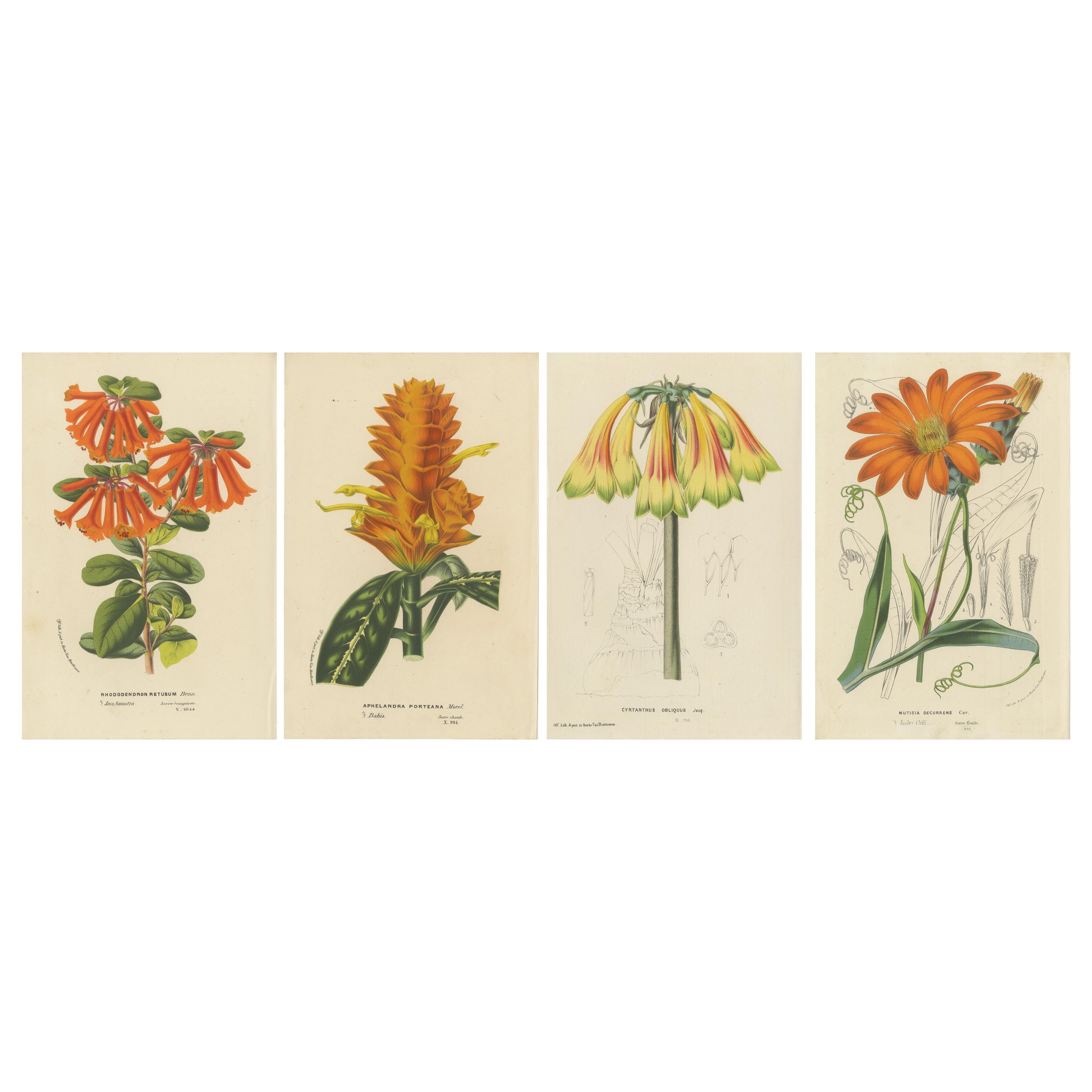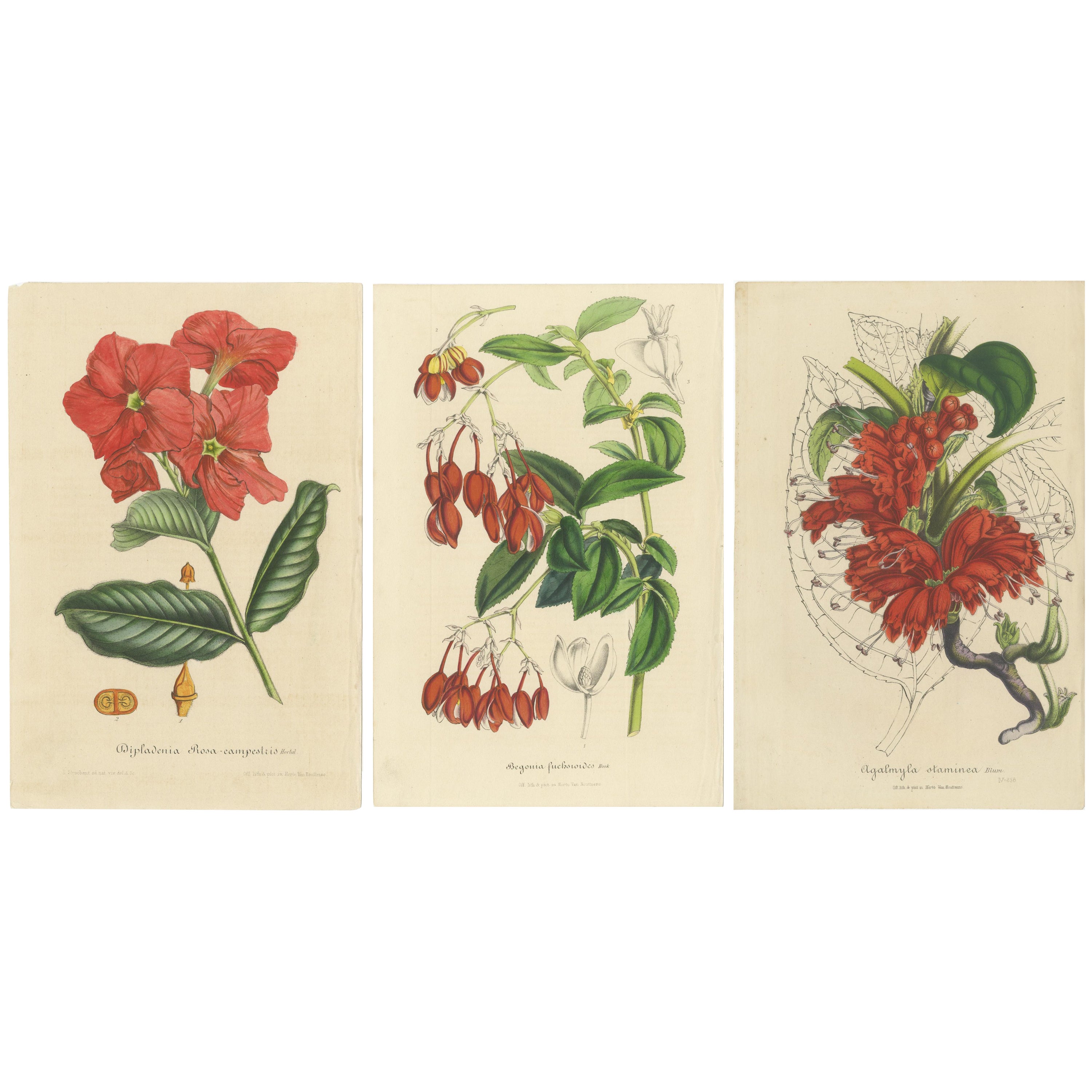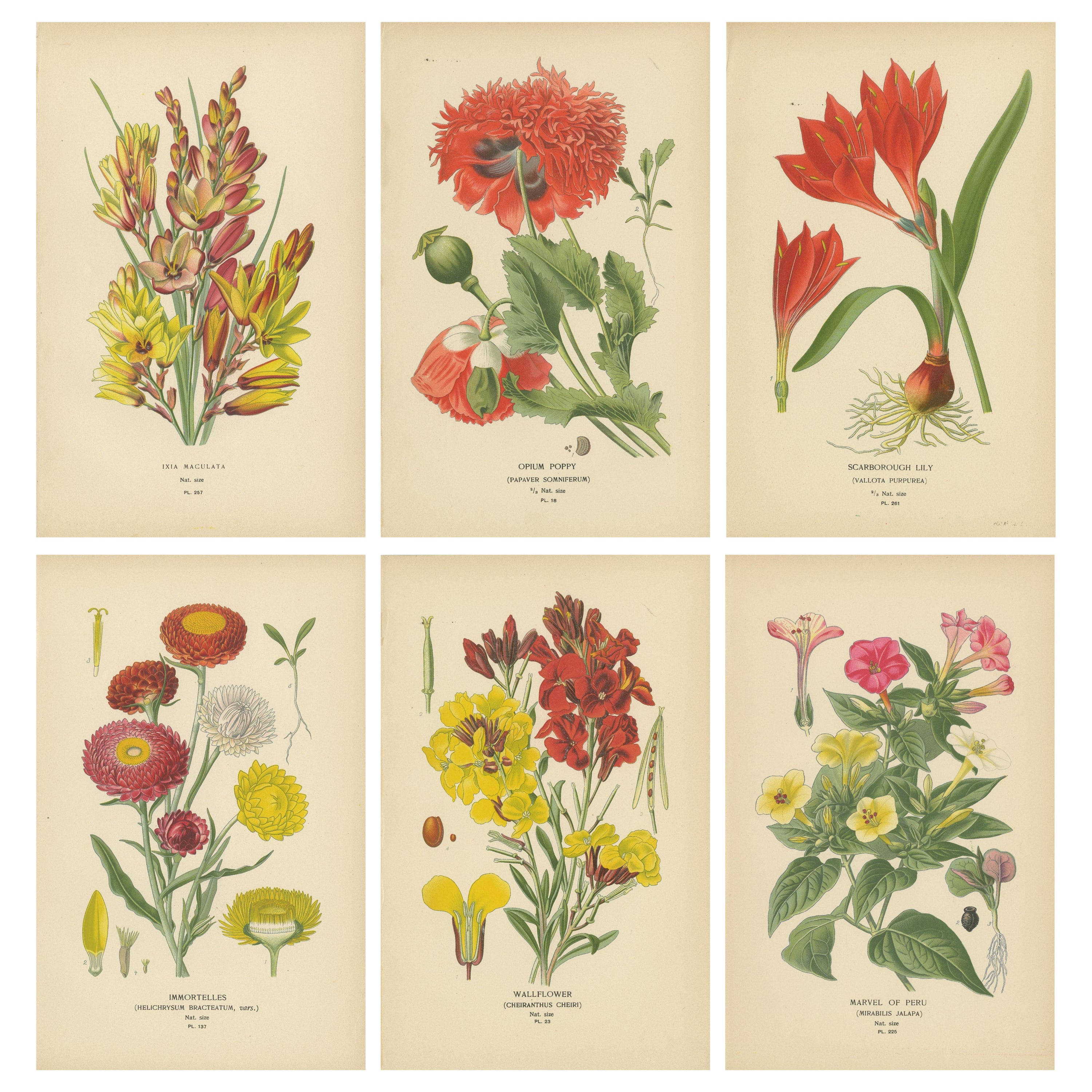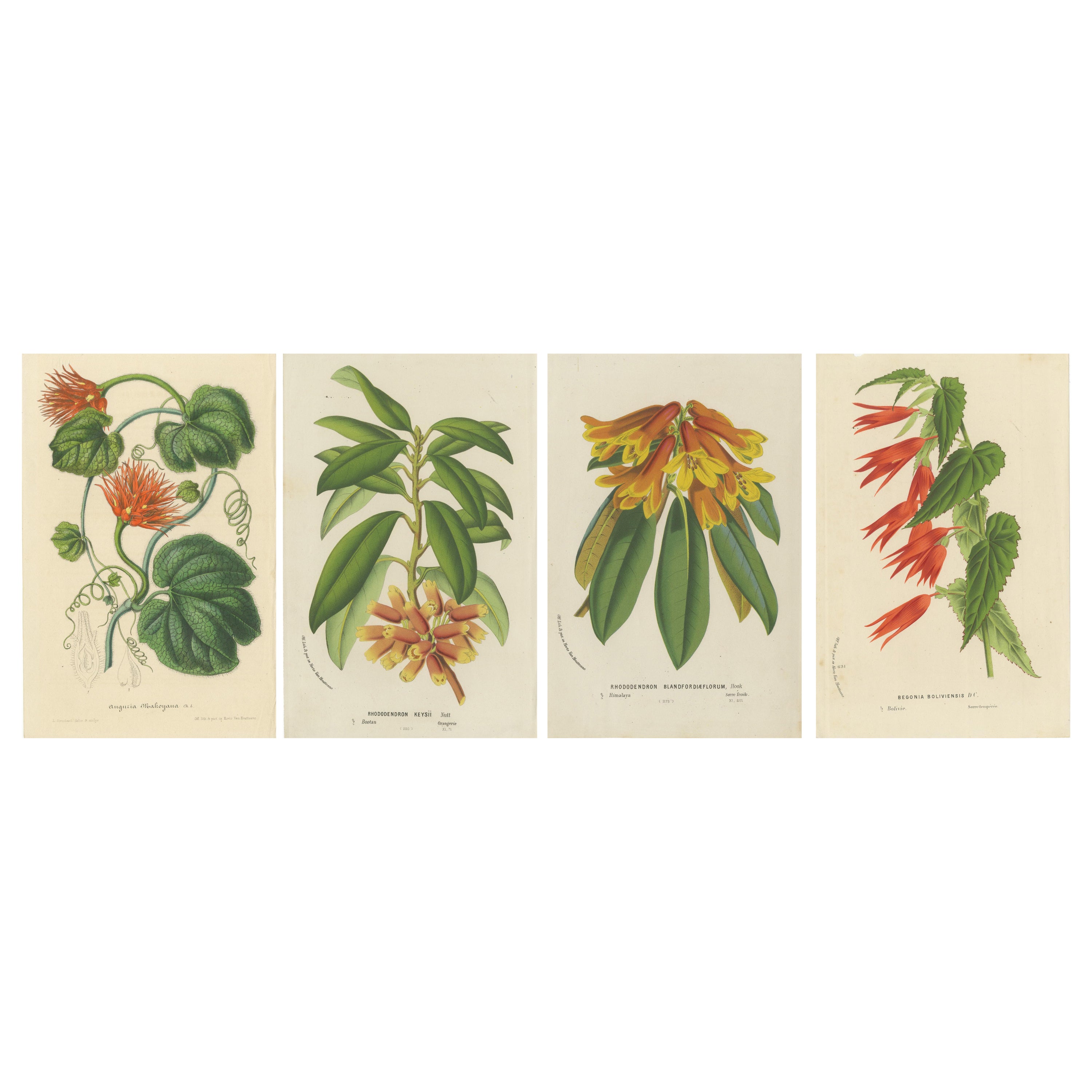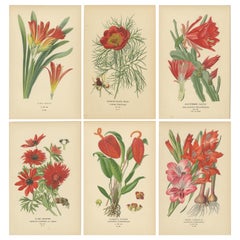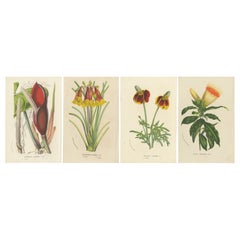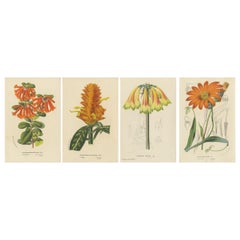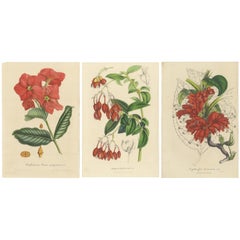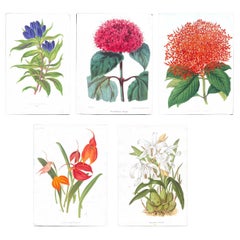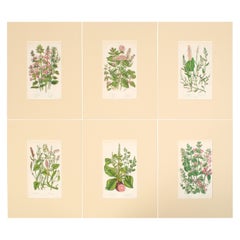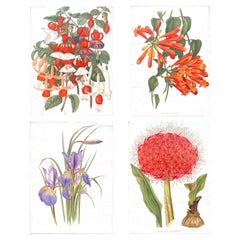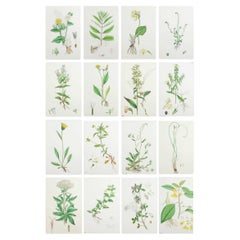Objekte ähnlich wie Originale botanische Illustrationen aus der Revue Horticole, ca. 1855
Möchten Sie mehr Bilder oder Videos?
Zusätzliche Bilder oder Videos von dem*der Anbieter*in anfordern
1 von 10
Originale botanische Illustrationen aus der Revue Horticole, ca. 1855
536 €pro Set|Einschließlich MwSt.
670 €pro Set20 % Rabatt
Angaben zum Objekt
Here are descriptions of the eight botanical illustrations, including the Latin and English names of the plants, why they are significant, and details about the creators and the technique used to produce these antique prints.
1. Stanhopea x bellaerensis
- Latin Name: *Stanhopea x bellaerensis*
- Common Name: Stanhopea Orchid Hybrid
- Special Features: This orchid species is known for its striking yellow petals, which are speckled with red-brown spots. Orchids in the *Stanhopea* genus are highly prized by collectors for their complex flower structures and enchanting fragrance. What makes *Stanhopea* orchids particularly interesting is their habit of blooming downward, requiring the flowers to grow through slats or hanging pots, as depicted in the print.
- Artist: L. Descamps-Sabouret
- Technique: Chromolithography, printed by G. Severyns in Brussels.
2. Physalis Franchetii
- Latin Name: *Physalis Franchetii*
- Common Name: Chinese Lantern Plant
- Special Features: The *Physalis* is known for its bright orange, lantern-like husk that surrounds the fruit, making it a popular ornamental plant. The lantern-like structure is actually the enlarged calyx of the flower. The plant is interesting for both its ornamental appeal and its edible fruits, which are enclosed in these colorful, papery husks.
- Artist: L. Descamps-Sabouret
- Technique: Chromolithography by J.L. Goffart in Brussels.
3. Mutisia viciaefolia
- Latin Name: *Mutisia viciaefolia*
- Common Name: Mutisia
- Special Features: This climbing vine is native to the Andean regions of South America. It features bright, red-orange flowers with striking contrast against its fern-like leaves. What makes *Mutisia* interesting is its adaptation to high-altitude environments, where its flowers attract hummingbirds for pollination. Its vibrant color and exotic origin make it a special plant in both horticulture and botanical studies.
- Artist: Godart
- Technique: Chromolithography by G. Severyns.
4. Erigeron aurantiacus
- Latin Name: *Erigeron aurantiacus*
- Common Name: Orange Fleabane
- Special Features: This species is characterized by its vivid orange, daisy-like flowers. It is a perennial plant that is native to Central Asia and is often used in alpine gardens due to its hardiness and striking floral display. The bright orange color is uncommon in the *Erigeron* genus, making this species highly sought after by gardeners.
- Artist: Godart
- Technique: Chromolithography by G. Severyns.
5. Caraguata conifera
- Latin Name: *Caraguata conifera* (now more commonly referred to as *Aechmea conifera*)
- Common Name: Conifer Bromeliad
- Special Features: This plant, a member of the Bromeliad family, is known for its vibrant conical inflorescence with bright red and yellow bracts. Native to tropical regions, it thrives in humid conditions and is an epiphyte, meaning it grows on other plants. Its ornamental and exotic appearance makes it highly valued among collectors.
- Artist: L. Descamps-Sabouret
- Technique: Chromolithography by G. Severyns.
6. Odontoglossum Rossii majus and Sophronitis grandiflora aurantiaca
- Latin Names: *Odontoglossum Rossii majus* and *Sophronitis grandiflora aurantiaca*
- Common Names: Ross's Odontoglossum and Sophronitis Orchid
- Special Features: These two orchids are shown together. *Odontoglossum Rossii* is known for its mottled sepals and petals with intricate color patterns, while *Sophronitis grandiflora* is admired for its fiery red flowers. Both species are rare and highly collectible due to their stunning blooms and difficulty in cultivation. Orchids are particularly fascinating for their intricate reproductive structures, which have evolved to attract specific pollinators.
- Artist: Godart
- Technique: Chromolithography by G. Severyns.
7. Tritoma nobilis
- Latin Name: *Tritoma nobilis* (now commonly referred to as *Kniphofia nobilis*)
- Common Name: Red Hot Poker
- Special Features: This striking plant, native to South Africa, is known for its tall flower spikes that transition in color from bright red at the top to yellow at the base, resembling a torch. The vibrant colors attract hummingbirds and other pollinators. The plant is particularly interesting for its heat tolerance and dramatic appearance in gardens.
- Artist: Godart
- Technique: Chromolithography by G. Severyns.
8. Neumannia arcuata
- Latin Name: *Neumannia arcuata*
- Common Name: Neumann's Orchid
- Special Features: This epiphytic orchid is known for its slender red bracts and green foliage. It is native to tropical rainforests, where it clings to trees and other surfaces. Orchids like *Neumannia arcuata* are fascinating due to their ability to grow in the canopy of the rainforest, surviving on minimal soil and absorbing nutrients from the air and rain.
- Artist: Coriat
- Technique: Chromolithography by G. Severyns.
Why These Plants Are Special:
- Aesthetic Appeal: The vivid colors, unusual shapes, and textures of these plants make them highly desirable in both horticulture and botanical illustration.
- Ecological Importance: Many of these species are native to tropical and subtropical regions, playing important roles in their ecosystems by providing food and shelter for various pollinators, including hummingbirds, bees, and butterflies.
- Horticultural Value* Many of these plants have been introduced into cultivation due to their ornamental appeal. Their exotic origins and unusual forms make them favorites in gardens and greenhouses around the world.
Artists and Maker:
- L. Descamps-Sabouret, Godart, and Coriat: These botanical artists were notable contributors to the world of scientific illustration in the 19th century. Their work was crucial in helping botanists and horticulturists study, identify, and classify new plant species.
- Chromolithography by G. Severyns, J.L. Goffart: These prints were created using chromolithography, a labor-intensive color printing technique that allowed for rich, multi-colored images to be produced. The process was particularly well-suited to botanical illustrations, as it enabled artists to capture the vivid colors and intricate details of plants. Severyns and Goffart were among the best chromolithographers in Belgium, known for their high-quality prints.
Technique - Chromolithography:
- Chromolithography was a revolutionary color printing technique developed in the 19th century. It involved using multiple stones or plates, one for each color, to build up an image layer by layer. This method allowed artists to create prints with a high degree of color accuracy and detail, making it ideal for botanical illustrations. The process required great skill and precision, as each color had to be aligned perfectly to produce a cohesive and vibrant final image. Chromolithographs were widely used in scientific publications, like *Revue Horticole*, to depict new plant species in an accurate and attractive manner.
- Maße:Höhe: 25 cm (9,85 in)Breite: 16 cm (6,3 in)Tiefe: 0,02 mm (0 in)
- Verkauft als:Set von 8
- Materialien und Methoden:
- Zeitalter:
- Herstellungsjahr:circa 1855
- Zustand:Condition: Very good, given age. General age-related toning and/or occasional minor defects from handling. Please study scan carefully.
- Anbieterstandort:Langweer, NL
- Referenznummer:Anbieter*in: BG-13761,-84 BG-13761-86, etc1stDibs: LU3054341456762
Anbieterinformationen
5,0
Anerkannte Anbieter*innen
Diese renommierten Anbieter*innen sind führend in der Branche und repräsentieren die höchste Klasse in Sachen Qualität und Design.
Platin-Anbieter*in
Premium-Anbieter*innen mit einer Bewertung über 4,7 und 24 Stunden Reaktionszeit
Gründungsjahr 2009
1stDibs-Anbieter*in seit 2017
2.517 Verkäufe auf 1stDibs
Typische Antwortzeit: <1 Stunde
- VersandAngebot wird abgerufen …Versand von: Langweer, Niederlande
- Rückgabebedingungen
Einige Inhalte dieser Seite wurden automatisch übersetzt. Daher kann 1stDibs nicht die Richtigkeit der Übersetzungen garantieren. Englisch ist die Standardsprache dieser Website.
Authentizitätsgarantie
Im unwahrscheinlichen Fall eines Problems mit der Echtheit eines Objekts kontaktieren Sie uns bitte innerhalb von 1 Jahr für eine volle Rückerstattung. DetailsGeld-Zurück-Garantie
Wenn Ihr Objekt nicht der Beschreibung entspricht, beim Transport beschädigt wurde oder nicht ankommt, kontaktieren Sie uns bitte innerhalb von 7 Tagen für eine vollständige Rückerstattung. DetailsStornierung innerhalb von 24 Stunden
Sie können Ihren Kauf jederzeit innerhalb von 24 Stunden stornieren, ohne jegliche Gründe dafür angeben zu müssen.Geprüfte Anbieter*innen
Unsere Anbieter*innen unterliegen strengen Dienstleistungs- und Qualitätsstandards, wodurch wir die Seriosität unserer Angebote gewährleisten können.Preisgarantie
Wenn Sie feststellen, dass ein*e Anbieter*in dasselbe Objekt anderswo zu einem niedrigeren Preis anbietet, werden wir den Preis entsprechend anpassen.Zuverlässige weltweite Lieferung
Unsere erstklassigen Versandunternehmen bieten spezielle Versandoptionen weltweit, einschließlich individueller Lieferung.Mehr von diesem*dieser Anbieter*in
Alle anzeigenBotanicale Illustrationen aus der viktorianischen Ära: Eine visuelle Feier der Flora
Es handelt sich um leuchtende Chromolithografien aus "Favourite Flowers of Garden and Greenhouse" von Edward Step, illustriert von Désiré Bois und 1896 bei Frederick Warne & Co. in L...
Kategorie
Antik, 1870er, Drucke
Materialien
Papier
392 € Angebotspreis / Set
20 % Rabatt
Illustriert: Eine Sammlung botanischer Kunst des 19. Jahrhunderts, veröffentlicht um 1875
Die Drucke zeigen verschiedene botanische Arten, die jeweils mit detaillierter Aufmerksamkeit für die Morphologie der Pflanzen, einschließlich der Blätter, Blüten und manchmal Frücht...
Kategorie
Antik, 1870er, Drucke
Materialien
Papier
272 € Angebotspreis / Set
20 % Rabatt
Lebhafte botanische Porträts: Exquisite Pflanzenillustrationen aus dem 19. Jahrhundert
Diese mit Präzision und reicher Farbgebung ausgeführten Illustrationen sind schöne Beispiele für die Chromolithografie, eine im 19. Jahrhundert beliebte Technik zur Herstellung leben...
Kategorie
Antik, 1870er, Drucke
Materialien
Papier
304 € Angebotspreis / Set
20 % Rabatt
Exquisite botanische Illustrationen aus Curtis' botanischem Magazin (1847)
Diese wunderschönen handkolorierten botanischen Illustrationen, gezeichnet und lithographiert von dem bekannten Künstler Walter Hood Fitch, wurden in Sir William Jackson Hookers *"Cu...
Kategorie
Antik, 1840er, Drucke
Materialien
Papier
344 € Angebotspreis / Set
20 % Rabatt
Floral Treasures: Chromolithographien aus der botanischen Sammlung des 19. Jahrhunderts
Die folgenden sechs Chromolithografien sind Teil einer 1896 veröffentlichten Sammlung, die von Désiré Bois und Edward Step geschaffen wurde. Sie illustrieren botanische Themen mit be...
Kategorie
Antik, 1890er, Drucke
Materialien
Papier
432 € Angebotspreis / Set
20 % Rabatt
Üppig und lebendig: Eine Sammlung exotischer botanischer Illustrationen, um 1875
Die Drucke zeigen eine Auswahl exotischer Pflanzen mit bemerkenswertem Detailreichtum und leuchtenden Farben, die die Schönheit und Vielfalt des botanischen Lebens veranschaulichen. ...
Kategorie
Antik, 1870er, Drucke
Materialien
Papier
328 € Angebotspreis / Set
20 % Rabatt
Das könnte Ihnen auch gefallen
Bignonia venusta - Antike botanische Chromolithographie, 1880er Jahre
Ein auffälliger botanischer Originaldruck aus den 1880er Jahren, der die Bignonia venusta, auch bekannt als Flammenrebe oder orangefarbene Trompetenrebe, zeigt. Diese farbenprächtige...
Kategorie
Antik, 19. Jahrhundert, Französisch, Drucke
Materialien
Papier
Set von sechs englischen botanischen Gravuren des 19. Jahrhunderts, England, um 1880
Ein Satz von sechs englischen botanischen Stichen des 19. Jahrhunderts, England um 1880.
Passepartout, bereit zum Einrahmen.
Schöne Exemplare, in ausgezeichnetem, altersgemäßem...
Kategorie
Antik, Spätes 19. Jahrhundert, Englisch, Viktorianisch, Drucke
Materialien
Papier
Original 1880er Botanischer Druck von Hæmanthus Kalbreyeri - Lebendiges antikes Chromol
Diese beeindruckende Original-Chromolithografie aus den 1880er Jahren zeigt die dramatische Hæmanthus kalbreyeri, die auch als Blutlilie bekannt ist. Diese seltene Illustration, die ...
Kategorie
Antik, 19. Jahrhundert, Französisch, Drucke
Materialien
Papier
Set von 16 originalen antiken botanischen Drucken, um 1850
Wunderschöner Satz von 16 botanischen Drucken
Lithographien nach den botanischen Originalzeichnungen von Hooker.
Original Farbe
Veröffentlicht, um 1850
Ungerahmt.
Die angegebene...
Kategorie
Antik, 1850er, Englisch, Frühviktorianisch, Drucke
Materialien
Papier
Satz von 6 Original-Antik-Botanikdrucken, um 1870
Schöner Satz von 6 botanischen Drucken
Chromo-Lithographien
Original Farbe
Veröffentlicht, ca. 1870
Ungerahmt.
Die angegebenen Maße beziehen sich auf einen Druck.
Kostenloser V...
Kategorie
Antik, 1870er, Englisch, Viktorianisch, Drucke
Materialien
Papier
Frühes 20. Jahrhundert, Italienische Botantische Drucke
Anfang des 20. Jahrhunderts, Italienische Botanische Drucke. 8 Verfügbar.
Kategorie
